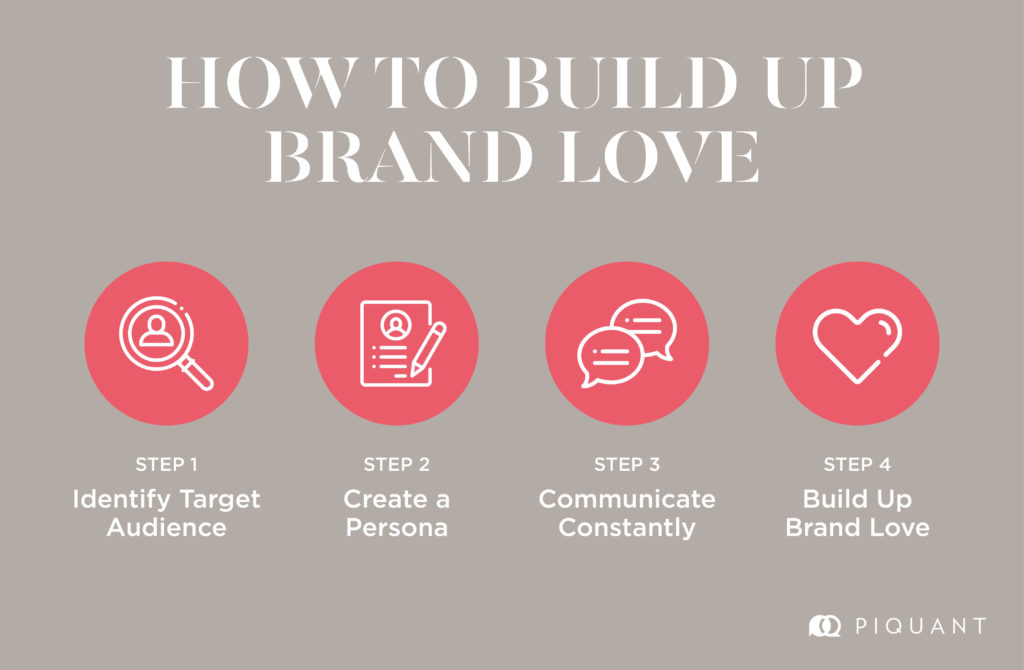How to build a brand that your customers love
Why are customers loyal to some brands and not others? What do businesses need to do to retain their customers? This is a common question that many business owners ask themselves.
Customer loyalty is not achieved overnight. It is an ongoing effort from the brand that starts with genuine care and concern for customers. Many businesses ignore or forget the importance of understanding and communicating with the customers who are the key stakeholders that makes the purchase. Most often, businesses end up selling their strengths, instead of selling what customers need or want. It is easy for businesses to get caught in the rat race to drive sales but sometimes, it is good to slow down and think about the people behind that purchase decision. Understanding people is the key to success.
Many businesses do not realize the benefits of getting insights from customers, and many are going into big data hoping to find insights. But for the past few years, marketers and data scientists have been trying to optimize big data, only to evaluate that there is no winning strategy. Simply because humans are all unique individuals, and even if you gather data that seem to work for you now, their behavior changes in different modes and circumstances and nothing is ever constant. But let’s leave the big data talk for another time and go back to the main topic about making customers fall in love with your brand.
So how can we start building relationships with our customers? Here are 3 things you can start with

1. Know who your customers are.
In this age and time, identifying your target audience as the mass market will no longer work. Even if anyone and everyone can potentially buy your products or services. Consumers have evolved, advertising channels have evolved and brands need to evolve too. The process of identifying your target audience is more than just by merely age, gender and location.
For B2B companies, try segmenting your customers by product/service purchased, project size, decision making process or company size. And for B2C try segmenting by age, sales channel, marital status, occupation or average check out.
You can utilize any form of data about your customers and try to place them into groups that you think fall into the same category. These groups are therefore your customer segments.
2. Understand their needs and behaviour
Every human being is unique, but with a categorisation of traits for each customer segment, you get a little background about them that may affect their decision making. Find out more about these customer segments as a whole. Google is your best friend to gather insights from social media channels, online forums or news articles that may give you insights about consumers preferences and behavior. For B2B, utilise press releases or updates from companies, country or industry reports and even general economic news that impacts your customer segment.
From the research collected, create a profile for each segment and write down what you think their needs and worries are.
3. Communicate with them
Now comes the tedious part where brands need to establish the commitment to embark, which is supposed to be a constant communication process.
Every business is about solving a problem or a need. With that, being able to effectively communicate how your brand cares enough about their problem or need, to want to help them solve it, will get their attention. Being able to show care and concern to your customers is an ongoing process that should be fine-tuned every step of the way. Here are afew tips: constantly check in with customers to find out how they are doing, ask them what they think about the product or service, let them know that your business values their feedback and will take action if there are any issues, and finally, always take note of complaints.
That is how brand love is built.
If you are a customer of ride-hailing company Grab, you would probably know how they have evolved in their offerings and services and expanded their business since 2012. They are an example of a company that customers love. Starting out by offering only private hire cars, Grab grew their services to include ride pooling with other users, hitch rides with non full-time drivers and even to food delivery. Their app has evolved to provide so much more and all these new service introduction made many stakeholders happy which in turn build their brand loyalty.
During the course of their growth, they constantly kept in touch with their customers, requesting for feedback on their offerings and services and constantly communicating their intentions and updates via EDMs, in app updates and social platforms. If you open your Grab app now, you would also find a daily poll that asks simple questions that not only entertains consumers, but also gives them valuable insights about their customer’s preferences.
Grab also segments their customers and rewards their loyal and highest spenders with additional benefits and perks. They worked out a tiered reward system to ensure that customers who are at their highest tier receives the best deals and rewards. They have been evolving together with their customers, offering services that customers truly cared about.
As stated by Jack Ma, to be successful, we need IQ, EQ and LQ. That is the Love quotient. Brands should start to learn how to care about consumers’ needs and problems, to make the world a better place.
Summing Up
Before you dive into building brand love, you need to consider the context of your organisation’s purpose, values and product or service delivery. Taking time to understand your stakeholders, fine-tuning your proposition, considering the mechanics of delivery and adopting an insight driven approach will go a long way in helping you do this.
Read more about LQ here: https://www.inc.com/marcel-schwantes/1-rare-trait-that-actually-trumps-iq-emotional-intelligence-says-billionaire-jack-ma.html
Check Piquant out on our social channels for more branding trends and marketing tips that may be relevant to you!


